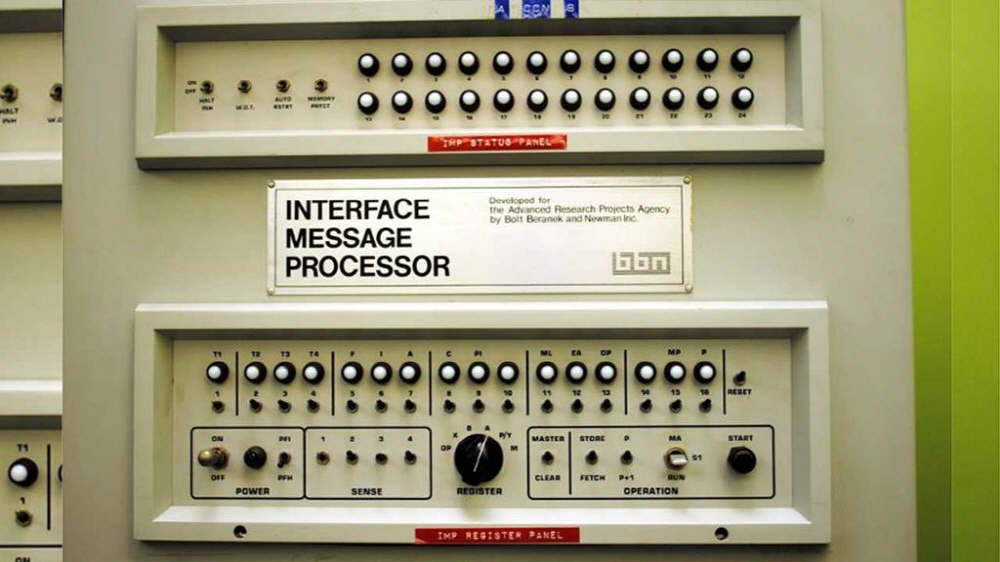
On October 29, 1969, the predecessor of the Internet, ARPANET, was born. October 29th was the 50th anniversary of the Internet.
There was a cold war between the United States and a boy behind the birth of Alphanet. When the Soviet Union succeeded in launching the world’s first satellite Sputnik 1 on October 4, 1957, the United States was shocked that it was lagging behind the Soviet Union in science and technology. This is called Sputnik Shock.
In January 1958, the United States established the Advanced Research Projects Agency (ARPA), an organization designed to convert advanced science and technology into military technology in a short period in preparation for the Soviet advance. ARPA was renamed in 1996 and became known as the US Defense Advanced Research Projects Agency DARPA.
In the 1960s, ARPA invested money in computer development as part of its research, but at the time, computers had a problem that each computer had a different language. It is Robert Taylor, who is called the pioneer of the Internet, who faces this problem. There were three kinds of computers in his office. If you need to communicate with another university while communicating with the university, you have to deliberately go to another terminal to log in and contact you. To solve this hassle, Taylor devised the idea that one terminal communicates with three terminals each with a different language, rather than individually communicating with three terminals.

In the practical aspect, the necessity of network between terminals was increasing. Taylor was being asked by a team of university researchers to have a higher performance computer, but he also knew that there were times when universities were wasting their computer skills.
One of the causes of this waste is jet lag. Due to the large amount of land in the United States, the Stanford Laboratory in California, located on the west coast of the United States, used computers to the fullest and never used computers outside of business hours at MIT on the east coast. Therefore, if you add up the computers in the US, the performance was insufficient here, but the situation remained there.
Another cause is the software in the computer. At the time, the situation was that even if the University of Utah developed graphics software, to use the software, they had to apply to ARPA to purchase a new computer or go to the University of Utah. It was the interconnection between computers that solved this problem.
Taylor, who took office as Director of Information Technology Processing at ARAP in 1966, attempts to develop Alphanet, a network language and protocol that connects remote computers to share content and resources. This research is conducted with part of the funding for the development of ballistic missiles within ARPA for developing an indestructible network.
Alphanet was developed based on the queuing theory of Leonard Kleinrock, who taught computer science at UCLA. Atmospheric theory was a mathematical analysis of how to create dynamic links in data packets in various thin lines. In 1969, a research team led by Klinelock developed an Interface Message Processor (IMP) that controls packet transmission between networks, which became the prototype of a router. The interface between the IMP and the computer was also developed, and the IMP connected the SDS Sigma 7 at UCLA and the SDS 940 computer at Stanford Labs.
The project deadline for initial communication using Alphanet was October 31, 1969. The research team hangs 15 hours a day and reaches pre-alpha testing on October 29, two days before the deadline. The first message sent to Alphanet was 10:30 on October 29, 1969. Charles Klein, who was a student programmer at UCLA, sent and received a login command from Alphanet, and the Stanford Labs SDS 940 recognized the login command and conducted an experiment to verify that a specific mode was started. However, at the stage of sending lo during login spelling, Stanford University’s SDS 940 crashed, and the first message sent from Alphanet became lo.
Alphanet interconnects UCLA, Stanford Labs, University of California, Santa Barbara, and the University of Utah one month after sending its first message. In the 1970s and 1980s, the network continued to expand through the government, universities, and other research institutions.
When AlphaNet was born in 1969, computer networks were still in their infancy. However, it is predicted that the technology will mature in the future and spread to any home or office, such as electricity or telephone. Now, with the spread of smartphones and advances in wireless communication technology, the Internet can be used not only in offices, but almost anywhere in the world. Related information can be found here .


















Add comment